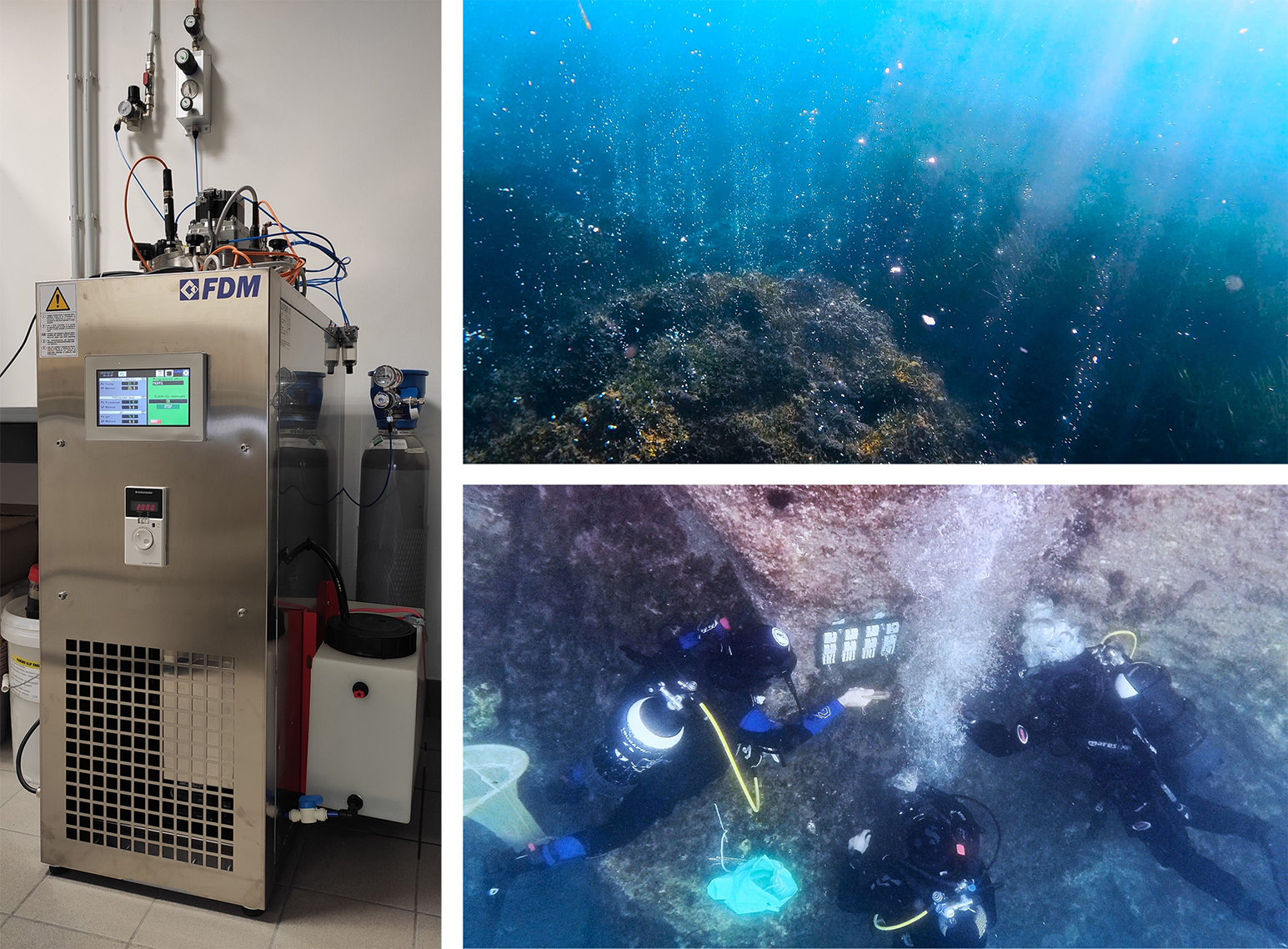Outline
WATERISKULT has an interdisciplinary profile, involving the fields of petrography, oceanography, marine biology, underwater archaeology, analytical chemistry, and hydraulic engineering. The research approach is based on a mixed field and laboratory experimentation, including laboratory simulations, field-exposure tests, sampling, analysis, and monitoring of stone materials in different underwater environments. Following this outline, WATERISKULT focuses on the causes and effects of past, present, and future stone decay.
Methods
Climate change and predicted decay
Ocean acidification causes increasing solubility of calcium carbonate minerals and rock dissolution rate. On the other hand, storms produce high waves and violent ocean currents. Considering these key-factors, the laboratory experimentation involves the simulation of conditions of controlled environmental stress (changes of water pH , high-speed water turbulences, etc.) on different historical materials, using innovative techniques and custom-made instruments; and the following damage quantification, to be exploited for reconstructing stone decay trends based on IPCC data. The simulations are linked with the natural conditions by exposure tests and long-term monitoring programs in seawaters with a range of different properties.

Observed current decay
The characteristics of stone deterioration as currently observed in underwater archaeological sites are also explored. Descriptive decay patterns are elaborated based on multi-site sampling and laboratory analysis of different archaeological materials, from locations with diverse properties of seawater, biological communities, etc. The studied geographical basin is the Mediterranean Sea, which counts over 150 submerged cities and port structures, and three pilot sites were selected, in Italy, Cyprus, and France. The findings are evaluated in view of the specific vulnerability of the archaeological sites and the results of the laboratory simulations, in order to better define the risk to heritage preservation.
